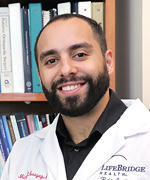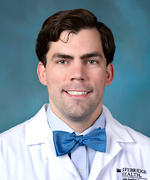Growth Arrest
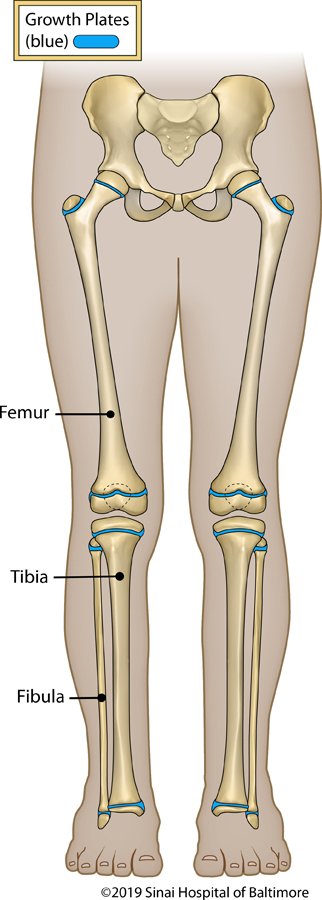
What is a growth arrest?
A growth arrest is a condition that affects the growth plates in the arms or legs in children and adolescents whose bodies are still growing. Growth plates are located near each end of the humerus (upper arm bone), ulna/radius (lower arm bones), femur (thigh bone) and tibia (shin bone). They are composed of a thin (3 mm, 3/25 of an inch) layer of specialized cartilage. Growth plates are responsible for children’s arms and legs getting longer as they mature. Because they are responsible for the growth of these bones, growth plates that are affected by growth arrest will not function normally. Growth arrest causes abnormal bone growth, such as the bone growing slower than it should or not growing at all.
What causes a growth arrest?
A growth arrest is caused by any damage to the growth plate. This damage can be caused by fractures, infection, benign bone tumors, developmental conditions (e.g., Blount disease), metabolic conditions or a lack of blood supply to the growth plate.
What is a partial growth arrest?
A partial growth arrest is when one side of the growth plate functions normally but the other side behaves abnormally. This will cause the bone to gradually grow unevenly and become crooked.
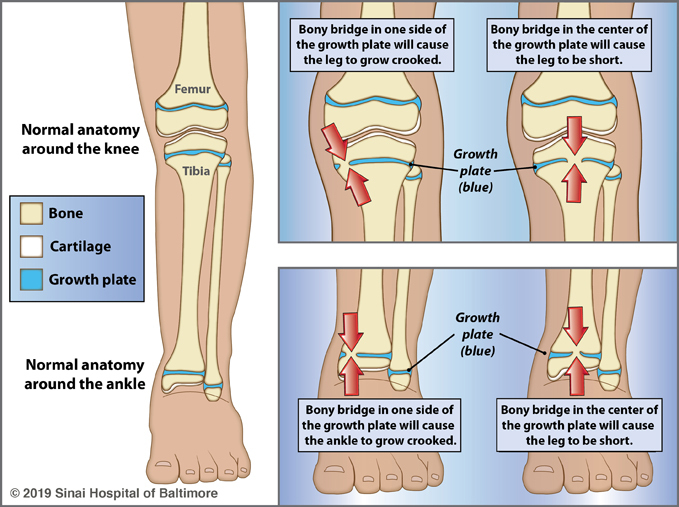
What is a complete growth arrest?
A complete growth arrest is when the entire growth plate does not function normally and the bone stops growing altogether. This causes a limb length discrepancy in which one arm or leg is shorter than the other.
How is growth arrest diagnosed?
X-rays are the best method to evaluate injuries to the growth plates. CT scans and MRI evaluations are used to give more detailed information about the growth plate damage and help in planning treatment.
What are the goals of treatment?
The goals of treatment are to restore the natural growth of the limb, if possible, and to ensure that the arm/leg has proper alignment. If restoration of natural growth is not feasible, then alternative treatments are required.
How is a growth arrest treated?
One treatment option is to surgically remove the damaged area of the growth plate so that growth can continue normally. This can be done when less than 40% of the growth plate is damaged and the child has at least 2 years of growth remaining until they are skeletally mature. The damaged area is replaced with a piece of fat from the child’s body to prevent reformation of a bony bridge. This procedure is called a physeal bar resection.
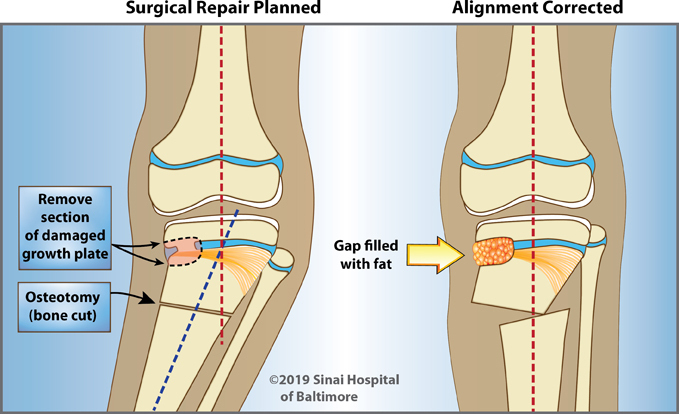
When a peripheral growth arrest causes a bone to grow crooked and more than 50% of the growth plate is damaged, the best strategy is to complete growth plate arrest on the non-injured part of the growth plate. This will prevent worsening of the uneven growth that makes the limb grow crooked. When bones that had a growth arrest are already crooked and need to be corrected, the bone can be cut (osteotomy) and slowly straightened with an external fixator.
If a severe growth arrest has entirely stopped growth and resulted in a limb length discrepancy (one leg or arm shorter than the other) treatment options include:
- Lengthening the short limb with an external fixator,
- Lengthening the short limb with an internal device, such as a Precice nail,
- Growth plate fusion (epiphysiodesis): The growth plate of the healthy arm/leg is surgically fused. This stops the growth of the healthy limb so that the difference between the two sides does not progress. Ultimately, if a growth plate fusion is performed in the leg, the patient may not reach their tallest potential height, but the legs will be of equal length provided that the opposite, healthy side is treated within a year of the damaged side.
Why choose the International Center for Limb Lengthening for treatment of growth arrest?
Limb lengthening and deformity correction are complex processes. Your doctor at the International Center for Limb Lengthening will take the time to make sure you understand all your options and then will customize your treatment to meet your specific needs. Our patients benefit from our team-centered approach with world-renowned pediatric and adult orthopedic surgeons and specialized physician assistants, nurses and physical therapists. We help patients with growth arrest achieve their best possible result.
Chat with a doctor about growth arrest
Our doctors hold free monthly chats on various subjects, including growth arrest. Click here for more information about our monthly chats.
Doctors who treat growth arrest
*Patients Over 16 Years Old Only
†Children and Adolescents/Young Adults Only
